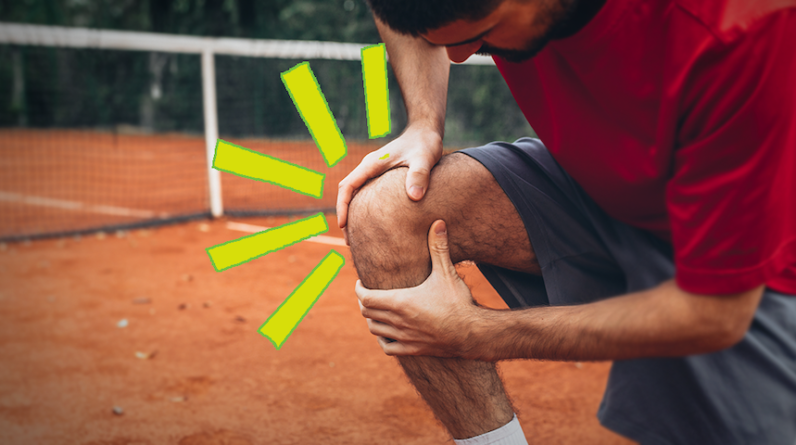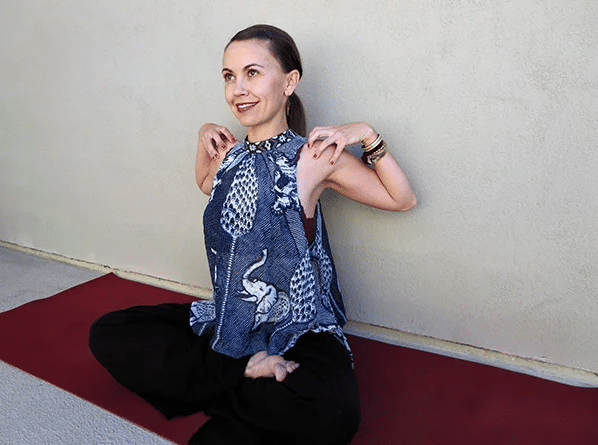
We associate cracking and snapping sounds with breaking, so it’s understandable that a noisy knee might give you pause or make you wonder, “Why does my knee pop?”
Unfortunately, there’s no single definitive answer. Knee popping is very common and occurs for a number of reasons, ranging from relatively benign to potentially concerning.
To help you better understand the symphonic range of your knees, we spoke with a few medical experts to get their take on knee popping, when to see a doctor, and how to keep your knees healthy.
What Causes Knee Popping or Snapping?
The sensations and sounds of knee popping, clicking, or snapping have various causes. Here are some of the most common culprits:
1. Gas bubbles
“Normal popping and snapping can be from the creation of negative pressure in a joint, which causes gas bubbles to form, resulting in that sometimes cringeworthy noise that you hear,” says Dr. Timothy Gibson, MD, orthopedic surgeon and medical director of the MemorialCare Joint Replacement Center at Orange Coast Medical Center in Fountain Valley, California.
“This phenomenon is most common in your knuckles, but it can also occur in the knees,” he explains. Gas bubbles are typically painless and not concerning.
2. Tissue movement
It’s possible that knee cracking could be caused by friction between the various structures of your knee, says Dr. Steve Yoon, MD, director of The Regenerative Sports and Joint Clinic at Cedars-Sinai Kerlan-Jobe Institute in Los Angeles, California, and head team physician for the Los Angeles Clippers.
“Knee popping can come from inside or outside the joint,” he explains. “Inside the joint, the popping may be due to irregular cartilage surfaces rubbing or articulating against each other. Outside the joint, there are tendons that can become tight and inflamed, which can move and pop over other surrounding structures.”
In many cases, rest, ice, and over-the-counter anti-inflammatory medication can help alleviate symptoms, but a doctor should evaluate any significant knee pain or swelling.
3. Meniscus tears
The meniscus is a piece of cartilage in the knee that provides cushioning and stability. When it’s torn — usually due to aggressive twisting and rotation, deep bending, or joint degeneration — you may experience knee popping as well as a feeling of locking or instability, pain, swelling, and difficulty bending and straightening the knee.
A doctor should evaluate a meniscus tear. “Meniscus or cartilage tears are often treated with arthroscopic or microsurgery to remove a damaged or torn piece of tissue,” Dr. Gibson says.
In some cases, rest, ice, and over-the-counter medication are recommended. Physical therapy may also be recommended.
4. Plica syndrome
Common among runners and athletes, plica syndrome can lead to knee clicking and popping, says Dr. Joseph J. Ciotola, MD, an orthopedic surgeon at Orthopedics and Joint Replacement, Mercy Medical Center in Baltimore. “A plica is an infolding of the lining of the knee, and it gets caught between the kneecap and the femur bone,” he says.
In some cases, the resulting knee popping is painless and not a cause for concern. However, if the knee becomes inflamed, arthroscopic surgery may be required to trim or remove the tissue.
5. Arthritis
Dr. Ciotola says that knee crepitus, which is a crunching or crackling (like the sound of crumpling a plastic bag), may be an early sign of osteoarthritis, a condition that causes cartilage deterioration.
Osteoarthritis is a chronic but manageable condition, with treatments including cortisone or lubricant injections.
Treatments for Knee Popping and Snapping
“Knees that experience painless popping and snapping are usually normal and do not need any treatment,” says Dr. Gibson. “Painful knee popping may respond to rest, ice, elevation, and avoidance of the activity causing the pain.”
Depending on your specific condition, your healthcare provider may recommend one or more of the following treatments.
1. Physical therapy
“Physical therapy can sometimes help by strengthening the muscle surrounding the painful, noisy knee,” Dr. Gibson says.
2. Injections
Steroid or a gelatinous hyaluronic acid injection “can lubricate the joint and help temporarily,” says Dr. Gibson. “Biologic injections, such as stem cells, are being used by some, but are still investigational and are very expensive.”
3. Surgery
“Mechanical locking and catching of a knee, due to a meniscus or cartilage tear, is often treated with arthroscopic or microsurgery to remove a damaged or torn piece of tissue,” Dr. Gibson says.
When Should I Worry About Noisy Joints?
Knee popping on its own isn’t usually cause for concern. Do check with a doctor if you experience ongoing:
- Discomfort or pain that doesn’t go away or worsens over time
- Swelling
- Mechanical locking of the knee
A medical professional can conduct a physical exam, recommend further testing (e.g., an MRI), and prescribe the appropriate treatment.
Tips for Healthy Knees
“The best way to maintain healthy knees is to avoid injuring them in the first place,” Dr. Gibson says. Here are some ways to safeguard your knees:
1. Maintain a healthy weight
This is the first thing most physicians will tell you. “Your knees feel four additional pounds of joint reactive force with each additional pound of body weight,” Dr. Gibson says. Keeping your weight within a healthy range will lessen the load on your joints and help reduce wear and tear.
2. Go low impact
High-impact activities that pound on the joints, like running and jumping, can exacerbate knee pain and even worsen conditions like osteoarthritis, according to Dr. Ciotola.
“Most arthritis is genetic, but you can accelerate it by beating on the joints,” he says. Low-impact exercise, like indoor cycling or swimming, can keep you fit without damaging your joints.
3. Don’t skimp on strength training
Strength training offers countless benefits, but specifically building up the muscles around your knee may help mitigate joint pain associated with loss of cartilage, says Dr. Ciotola.
“Keeping the quad muscles strong around the knee will help patients tolerate the symptoms of arthritis much better,” he says. “People who have very strong legs will tolerate a very worn-out joint much better than a couch potato.”
4. Focus on your form
While exercise can help knee pain, make sure to progress your weight gradually and make sure your form is on point when squatting or lunging.
“Lifting heavy weights with bad form is probably the worst thing you can do [for your knees],” says Ciotola. “That’s just a set-up to tear down the cartilage.”
5. Get evaluated by a physical therapist
Physical therapy isn’t just a form of treatment. A physical therapist can identify muscle imbalances and faulty movement patterns that, over time, can lead to injuries. Stretches, mobility work, and strengthening exercises can help keep your knees functional and feeling good.







